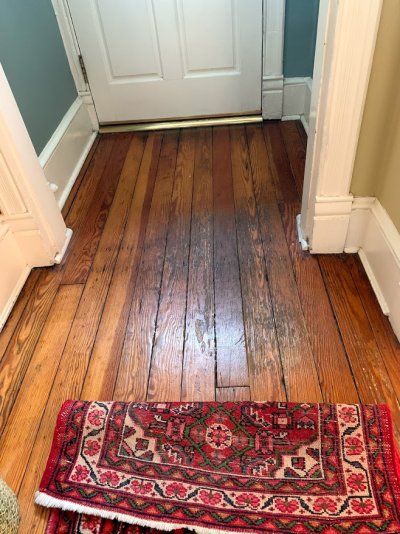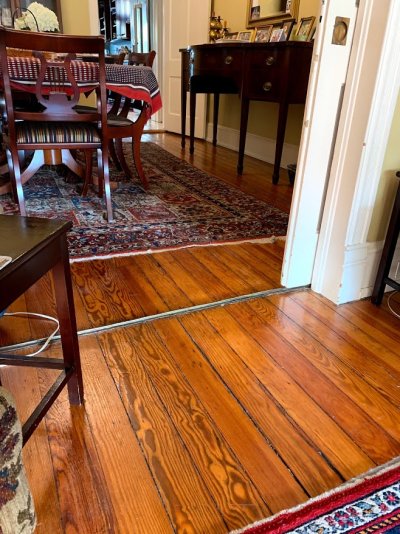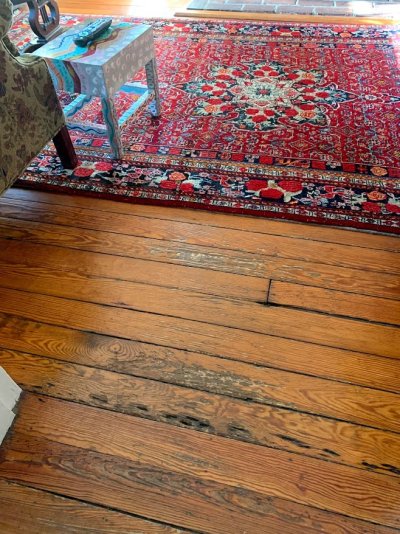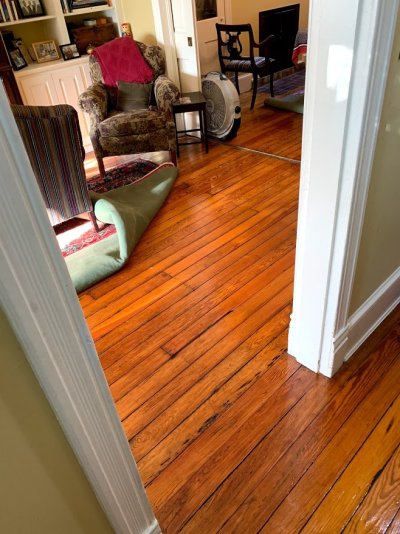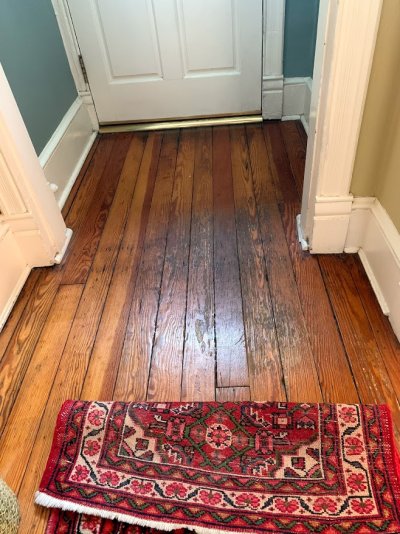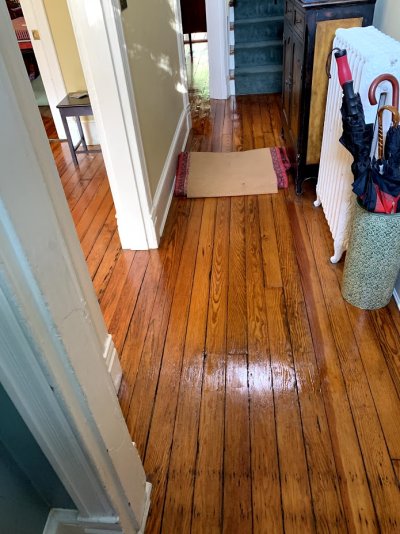donheff
Give me a museum and I'll fill it. (Picasso) Give me a forum ...
Taking a page from T-Al's home mechanics how-to posts I thought I would ask the experts for advice on repairing my old wooden floor. My floor is about 120 years old and in bad shape from the point of view of pros but in decent shape for what you expect to see in my historic old neighborhood, with the exception of a few areas that got extremely worn from foot traffic, years of running Golden Retrievers, and lack of maintenance by me. The pros recommend replacing the entire floor or the Full Monte professional sanding and refinishing. I considered the full job but DW and I don't want to live through the mess. Also, we have been living with the screwed up floor for years and will be satisfied with a marginal repair that removes the worst of the damage. I am posting two pictures - the first shows a damaged section of the floor in the hallway. The second shows a section of the floor between the living room and dining room that was nearly as damaged as the hallway until I repaired it.
My repair approach was to sand the damaged section down to bare wood with a belt sander I ordered off Amazon for $38 - it got good reviews and made more sense than renting. I first used 40 grit paper then moved up to 60 grit and finally 80 grit spreading out a little to adjacent undamaged areas. I followed that with a light buff with something called a purple sanding block that I read about somewhere for scuffing polyurethane before adding a coat. I buffed out into untouched surrounding floor so the patch would blend in. Next I stained the sanded areas with a stain mix that approximated the rest of the floor. Finally I gave the area two coats of semi-gloss polyurethane.
The results so far were better than I was expecting but I think I can probably do better on the rest of the damaged areas. I can feel that the repaired area is rougher than the adjacent areas. I think I need to do more sanding with higher grit papers to make the repair areas smoother before staining but I am not sure how much is needed. Any thoughts on this? And as I move up in grit levels should I continue using the belt sander or should I switch over to hand. My last question has to do with the finish. I am not sure whether I should be using semi-gloss or satin. From some angles with light streaming in the rest of the floor looks like it may be semi-gloss. At other times it seems more like satin. If I coat the repair with satin and want to go back to semi-gloss can I just buff the satin and toss on a glossier coat?
My repair approach was to sand the damaged section down to bare wood with a belt sander I ordered off Amazon for $38 - it got good reviews and made more sense than renting. I first used 40 grit paper then moved up to 60 grit and finally 80 grit spreading out a little to adjacent undamaged areas. I followed that with a light buff with something called a purple sanding block that I read about somewhere for scuffing polyurethane before adding a coat. I buffed out into untouched surrounding floor so the patch would blend in. Next I stained the sanded areas with a stain mix that approximated the rest of the floor. Finally I gave the area two coats of semi-gloss polyurethane.
The results so far were better than I was expecting but I think I can probably do better on the rest of the damaged areas. I can feel that the repaired area is rougher than the adjacent areas. I think I need to do more sanding with higher grit papers to make the repair areas smoother before staining but I am not sure how much is needed. Any thoughts on this? And as I move up in grit levels should I continue using the belt sander or should I switch over to hand. My last question has to do with the finish. I am not sure whether I should be using semi-gloss or satin. From some angles with light streaming in the rest of the floor looks like it may be semi-gloss. At other times it seems more like satin. If I coat the repair with satin and want to go back to semi-gloss can I just buff the satin and toss on a glossier coat?

